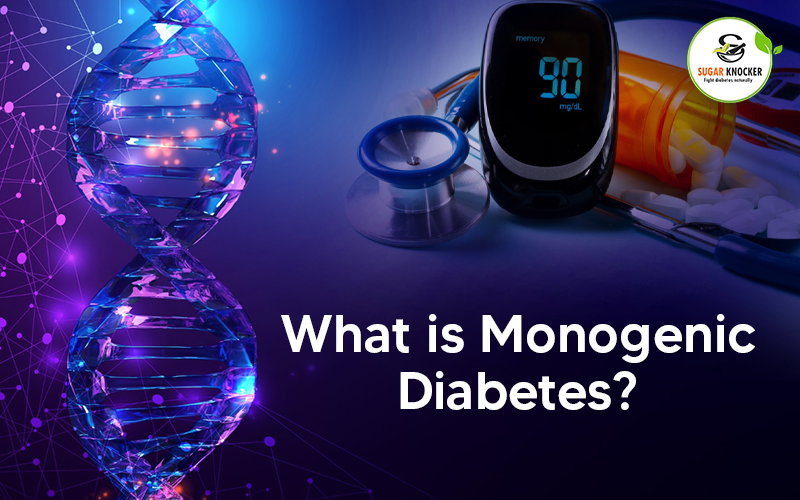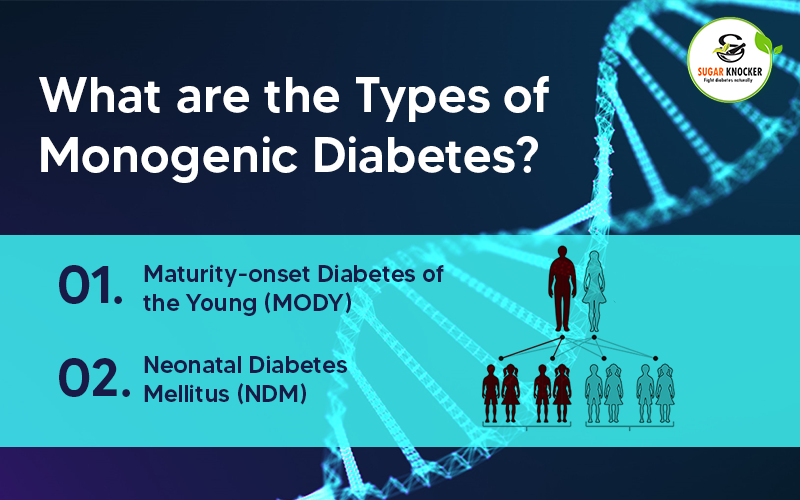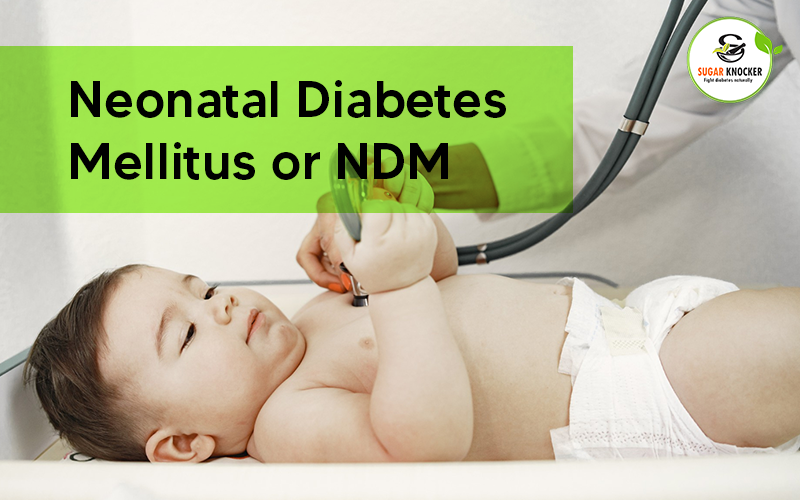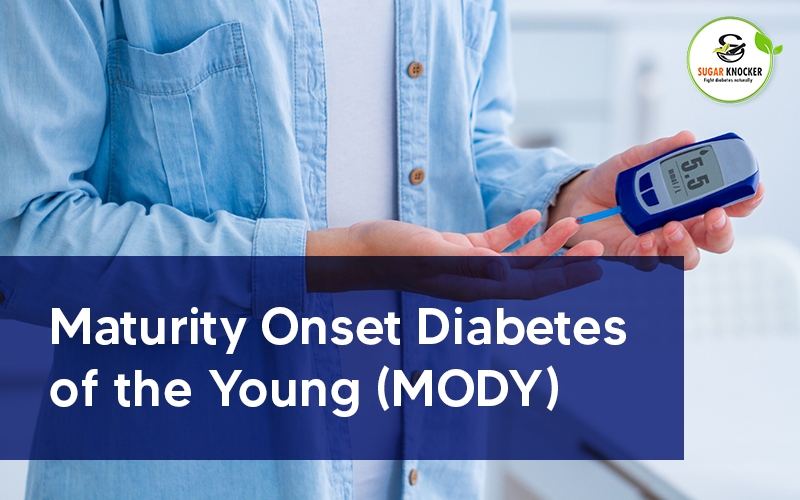
A Quick Guide on Monogenic Diabetes
We know about the most common forms of diabetes – Type 1 diabetes and type 2 diabetes. Both these kinds are polygenic diabetes. Polygenic diabetes is related to a defect or a change in multiple genes. Monogenic diabetes, on the other hand, is a rare condition that results from change or mutation in just one gene. Maximum cases of monogenic diabetes are inherited. Environmental factors like obesity also play a part in contracting polygenic diabetes like type 2.
Genes offer instructions to the cells to produce proteins. If a gene faces mutation or change, the protein might not fulfil its functions properly. Gene mutations that affect protein functioning affect the ability of the human body to produce insulin or its functionality. Humans feature two copies of genes, one from each parent.
Monogenic diabetes may manifest in various forms and most commonly affects youngsters. The majority of monogenic diabetes-affected people are young individuals, majorly 25 years or younger. In most forms of diabetes, the body is unable to produce sufficient amounts of insulin. Insulin is the hormone that aids the human body in using glucose to produce energy.
An accurate and timely diagnosis can allow you to seek the right treatment at the right time. For instance, some kids with monogenic diabetes are misdiagnosed with diabetes type 1 and given insulin doses as treatment. If diagnosed correctly, the kids can be prescribed diabetes tablets that offer better blood glucose control. In addition, an apt diagnosis can also help your family members who might have the condition without even knowing it.
What is Monogenic Diabetes?

Monogenic diabetes is a rare kind of diabetes that is caused due to mutation in just a gene. It accounts for nearly 1-2% of all diabetes cases, though the prevalence might be up to 5%. Most importantly, monogenic diabetes showcases both type 1 diabetes and type 2 diabetes symptoms which often gets it misdiagnosed as one of these kinds. Monogenic diabetes majorly affects young people and appears in varying forms.
How Does Monogenic Diabetes Differ from Other Common Types of Diabetes?
Two forms of diabetes are polygenic diabetes and monogenic diabetes. Polygenic diabetes is the most common kind of diabetes that we come across in most people around us.
What May Be the Reasons for Occurrence of Monogenic Diabetes?

Monogenic diabetes is an inherited disease that primarily affects people of younger age groups. Genes instruct the body cells to produce proteins. When a transformation occurs in a gene, the protein does not perform its functions. Genetic mutation damages the protein and affects its functioning. The protein functions to form insulin which further helps to regulate the blood sugar levels in the body. When the protein that regulates insulin is affected, people are diagnosed with monogenic diabetes. There are two gene copies in humans, one from each parent.
Monogenic diabetes is inherited from a sex-independent gene, an autosomal dominant gene. The autosomal gene is inherited from either of the parents. Meaning, just a single copy of the mutated gene is required to develop monogenic diabetes. A family that has a strong history of diabetes for generations is more likely to create monogenic diabetes. Additionally, someone with a spontaneous gene mutation can also contract monogenic diabetes. Diagnosis of monogenic diabetes requires genetic testing for genetic mutations that induce disrupted insulin release in the body.
What are the Types of Monogenic Diabetes?

Changes or mutations in a single gene cause a kind of diabetes called monogenic diabetes. It is a rare form of the diabetic condition and accounts for nearly 1-4% of diabetic conditions. In the majority of cases, the diabetic gene mutation is carried forward from either of the parents. Other times, the gene might undergo spontaneous mutation by itself. Mutations that lead to monogenic diabetes lower the ability of the body to form insulin hormones. Insulin aids the human body in utilizing glucose to produce energy.
Two main kinds of monogenic diabetes include the following:
- Maturity-onset diabetes of the young (MODY) – MODY diabetes usually occurs in early adulthood or adolescence.
- Neonatal diabetes mellitus (NDM) – NDM occurs in young infants and newborns.
Most of the diabetic cases in monogenic diabetes are not correctly diagnosed. For instance, when a youngster is detected with high blood sugar levels in adulthood, the general diagnosis would be type 2 diabetes. If your medical professional suspects you have the symptoms of monogenic diabetes, you may need to undergo some genetic testing to get it diagnosed and identify its type. Monogenic diabetes is carried forward from generations. Therefore, you must also have your family members checked to determine if they also have the disease. Monogenic diabetes can be managed with diabetes pills, while others need insulin injections. An apt diagnosis and proper medication can help with glucose level management and improve your overall health.
Neonatal Diabetes Mellitus or NDM

NDM or Neonatal Diabetes Mellitus is a form of monogenic diabetes. It appears in the initial six to twelve months of being newly born. It is an uncommon kind of diabetes that accounts for one diabetic person in every 400,000 newborns in the US. Infants suffering from NDM are incapable of producing sufficient insulin hormone, leading to increased blood glucose levels. Neonatal diabetes is often misdiagnosed as diabetes type 1, but diabetes type 1 rarely appears before six months of birth.
Diabetes that happens in the first six months of birth mostly has a genetic source. Researches and studies have classified various mutations and specific genes that can lead to NDM. In around half of the genes that lead to neonatal diabetes, the diabetes is permanent and is known as PNDM (permanent neonatal diabetes mellitus).
Clinical characteristics of neonatal diabetes depend on the genetic mutations that the person has. Common characteristics of NDM are accelerated breathing, frequent urination, and dehydration.
In the other cases with NDM, the diabetic condition is temporary and itself disappears during childhood. This kind of neonatal diabetes mellitus is called transient neonatal diabetes mellitus (TNDM).
High glucose levels in urine or blood can be signs of having NDM. Insufficient amounts of insulin make the body produce ketones. Production of ketones can lead to a lethal ailment called diabetic ketoacidosis.
Most unborn babies that suffer from neonatal diabetes do not experience adequate growth in the mother’s womb. Newborns with NDM conditions are smaller in size than similar-age newborns. This growth restriction due to NDM is called intrauterine growth restriction. Following childbirth, some kids can regain growth if given proper therapy and treatment.
Maturity Onset Diabetes of the Young (MODY)

MODY diabetes is a rare monogenic diabetes that mostly appear in early adulthood. This diabetic condition accounts for about 2% of diabetic cases in people aged twenty and younger in the United States.
Various gene mutations are determined to be the causing agent of MODY diabetes. All the genes limit the production of insulin from the pancreas. With insufficient insulin production, over time, body parts like tissues, kidneys, blood vessels, eyes, and nerves get damaged.
There can be varying clinical symptoms of MODY diabetes. These features are based on the genetic mutations a person contains. People with a specific kind of mutation experience a slight surge in blood glucose levels that stay almost the same way lifelong. Others, on the other hand, experience mild symptoms and do not suffer from any life-long complications. The elevated blood sugar levels in such people might only come to light during their routine blood check-ups. In addition, other gene mutations require medications like insulin injections or oral diabetic pills.
MODY diabetes is often confused with diabetes type 2 and type 1. People suffering from MODY diabetes are not overweight or possess the risk of abnormal blood fat levels or type 2 diabetes.
Although both MODY diabetes and diabetes type 2 can occur in people of the family generation after generation, patients with MODY diabetes possess a history in families. Meaning, MODY diabetes is a condition in a parent, kids, and the following generations.
Diagnosis and Treatment Options for Monogenic Diabetes

Monogenic diabetes is a rare condition. Therefore it might get ignored during diabetes diagnosis. However, some factors can have your professionals suspect that a diabetes type 1 or type 2 diagnosis might not be correct. To diagnose monogenic diabetes a combination of clinical characteristics and tests are run. The results help rule out diabetes type 1 and diabetes type 2. Let us look at the tests required for diagnosis:
- Blood Tests: – Blood tests help the professionals to measure the blood sugar levels and the count of insulin produced by the body. A blood test helps with the diagnosis. Doctors also check for the presence of autoantibodies that suggest diabetes type 1.
- Clinical Factors: – Some clinical factors that doctors consider while looking for monogenic diabetes symptoms are listed below. Let us take a look:
- Having been diagnosed in the initial six months.
- Possessing other conditions like cysts in the kidneys that are also caused due to specific gene mutations.
- No obesity
- Having diabetic family members with no obese condition.
- Having a family history of diabetic conditions, especially a parent or any other first-degree sibling or relative.
However, none of the factors can alone conclude the presence of monogenic diabetes. Instead, all these symptoms are considered along with the results of the blood tests.
- Genetic Testing: – A professional is the best person to determine if you would require genetic testing. Testing the genetic information in a blood test sample can determine if a person possesses monogenic diabetes. Genetic testing detects if the person has a gene that is causing neonatal or MODY diabetes.
Treatment Options for NDM and MODY

Treatment for MODY
The kind of treatment of MODY diabetes depends on the type of condition. Some people need no medication. Regular exercise and a healthy diet must suffice. Other people might need diabetes medication. MODY medication might include taking insulin injections or sulfonylurea pills. Sulfonylurea is a diabetic pill that aids the human body in producing insulin. In a kind of MODY diabetes, people might also require treatments for other associated conditions like gout and cysts in the kidney.
Treatment for Neonatal Diabetes
The treatment of neonatal diabetes is chosen based on the cause. Some kinds can be treated using sulfonylurea pills, while others might require injecting insulin. Small infants having transient neonatal diabetes might need insulin initially, but the condition can most likely disappear in about twelve weeks. In case diabetes later returns, one may again require insulin for stable blood glucose levels.
Takeaway: Keep an Eye on Early Signs
Monogenic diabetes is a rare condition, and it is not easily diagnosed. People often confuse monogenic diabetes with type 1 diabetes or type 2 diabetes as the symptoms are similar. Monogenic diabetes, if diagnosed at the right time, can be easily treated and managed.
Pay attention to the symptoms and get yourself checked under the supervision of a professional. Undergo the necessary tests and follow the process of diagnosis. Stay alert; stay safe!
